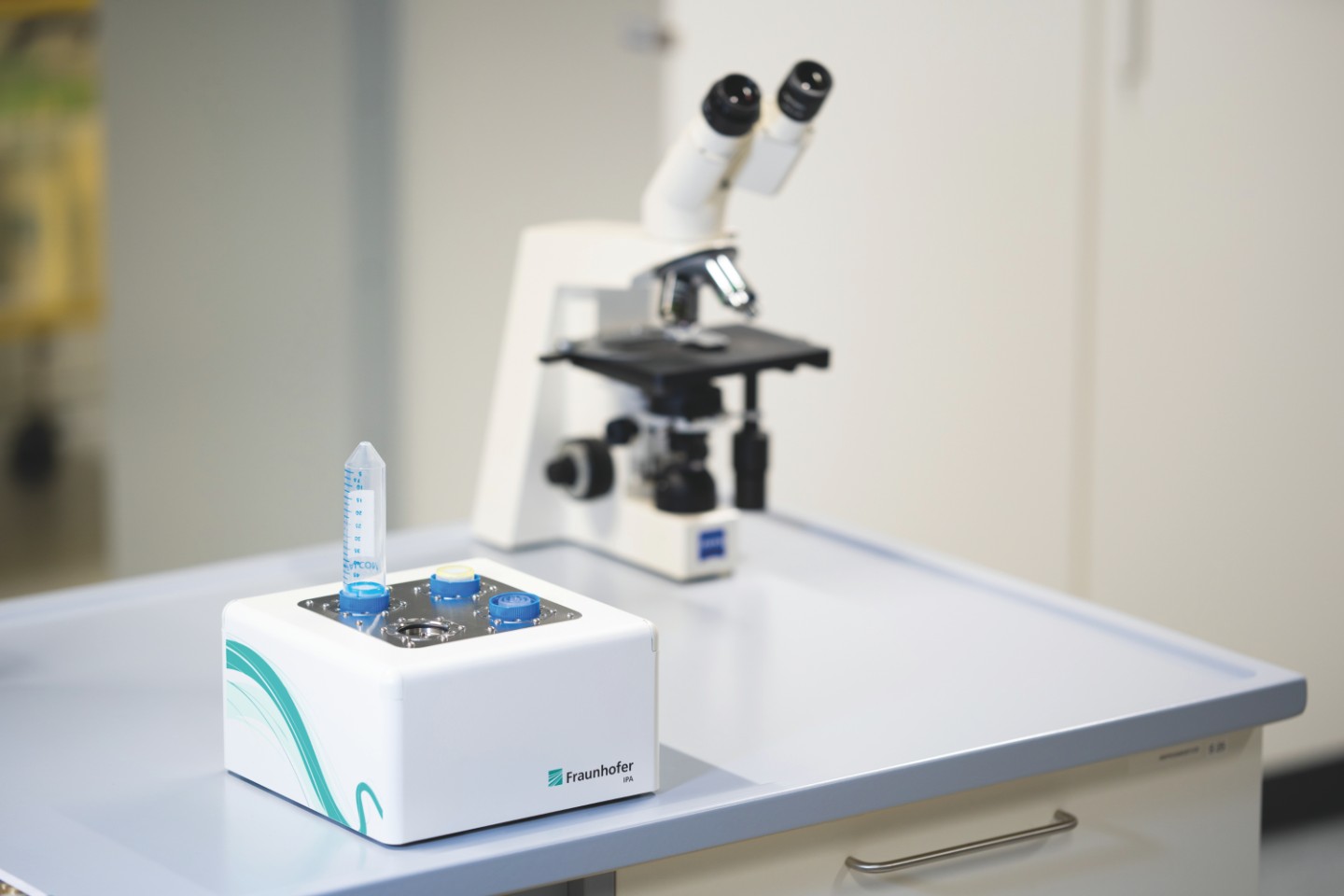Smart and Healthy Living
Sensitive detection of cancer cells in lymph nodes
With the help of lymph node diagnostics, it is possible to determine whether a tumor has already spread in the body and formed regional metastases. An interdisciplinary team of researchers from the Fraunhofer Institutes IIS, IPA and ITEM and the University Hospital Regensburg has now optimized and automated this diagnostic method.

Up to now, the lymph node tissue removed has been hardened in the laboratory, cut into thin slices and examined under the microscope. Since only a small part of the tissue is naturally examined in this so-called sectional diagnosis, tumor cells may remain undetected.
In the newly developed approach, the tissue is no longer cut up, but broken down into individual cells. A team at Fraunhofer IPA has developed the necessary grinding device, the TissueGrinder. In the next step, the tumor cells are stained with methods based on Fraunhofer ITEM‘s findings. The entire slide is then automatically digitized with a whole slide scanner. Using AI-based image analysis, individual tumor cells are detected with high sensitivity and reliably distinguished from other artifacts such as color aggregates or unspecifically stained cells (Fraunhofer IIS). Finally, tumor cells detected this way can be localized with micrometer precision, "isolated" from the slide and, thanks to DNA amplification, subjected to individual molecular diagnostics (Fraunhofer ITEM-R).
This workflow was evaluated on patients with skin cancer as well as lung cancer. Thanks to automation, the new LyDia HD diagnostics is not only more accurate, but also faster and more cost-effective than previous methods, providing important information about tumor cell characteristics. The new system thus creates an important prerequisite for the personalized medicine of the future. The project was successfully completed in 2019. Further samples are currently being evaluated in order to publish the results of this evaluation. Fraunhofer is looking for commercialization partners for the system. As part of the Fraunhofer spin-off program AHEAD, a start-up is currently being prepared with the aim of making the TissueGrinder sub-component of this workflow commercially available from autumn 2020.
Last modified: